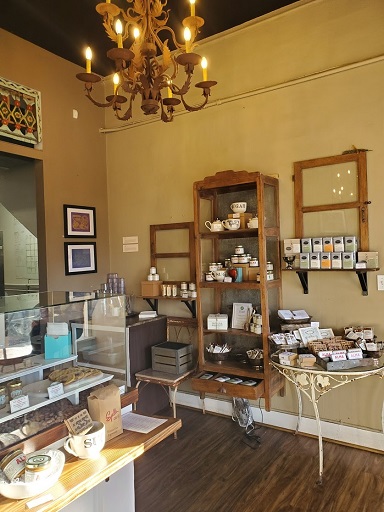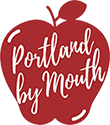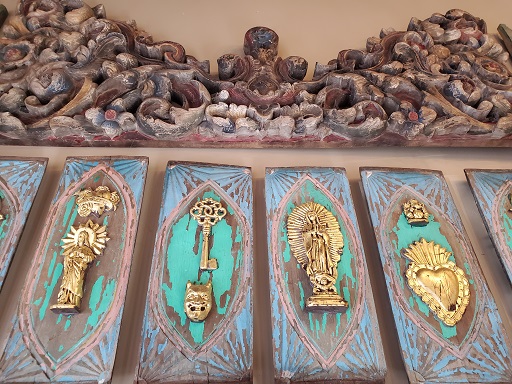A really sublime chocolate experience is heavenly. And chocolate is a health food and has been considered such for eons. Only in relatively recent times has chocolate been denigrated to junk food, because of the additions of so much milk and sugar. It shouldn’t surprise you that a self-proclaimed foodie has a bookshelf full of books about food. Many cookbooks, but also a lot of books that focus on a single ingredient, or the cultural aspects of food. So I whipped out my book The Chocolate and Coffee Bible and dug around for some fun facts about chocolate.
Some fun facts about chocolate!
The Mayans starting cultivating the cocoa tree around the fourth century. They called the tree cacahuaquchtl, meaning “tree.” As far as they were concerned, there was no other tree worth naming. They believed that the tree belonged to the gods and that the pods growing from its trunk were an offering from the gods to man.
It wasn’t until the eighteenth century when the Swedish botanist Linnaeus, who invented the binomial system of classification for all living things, named the tree Theobrama cacao. Theobrama means “drink of the gods” from the Greek Theos (god) and broma (beverage).
While the Spanish explorer Herman Cortes may not have been the first European to interface with cacao beans, he is generally considered the first to recognize the potential value of cacao beans as currency. He reported that a slave could be bought for 100 cacao beans, the company of a woman for ten beans and a rabbit for four beans.
To the Aztecs, chocolate was a source of spiritual wisdom, tremendous energy, and enhanced sexual powers. They used chocolate in religious ceremonies, using it as a face paint and to adorn themselves.
Champurrado, or chocolate atole, is a drink that is popular in Latin America today. It consists of chocolate that has had maize added to it, which turns it into a thin gruel. Champurrar translates to “to mix one drink with another.” This unique and delicious chocolate drink can be found at an unassuming café downtown, Revolución. It is not on any of our Portland food tours, so if you are wandering nearby that cafe, then pop on it!

Cocoa is a plant beloved by people worldwide – these humble beans have enticed us like few other plants have
Chocolate makes its way around the globe
Cacao did not evolve into the chocolate confectionaries we are familiar with until it reached the new world. It was consumed only in drink form and was thick and bitter and oily. This is still possible to find in Central America and I have enjoyed it many times there in this form. Sometimes adding cinnamon or chile pepper to boost the flavor.
Cacao reached the new world in the 1500’s, beginning in Spain. It followed trade routes and spread throughout Europe. Different countries played with chocolate and further refined the ways in which to process it. Henceforth the variety of chocolates from Italy, France, Switzerland and the Netherlands.
In 1828, The Dutchman Van Houten created a hydraulic press that was able to extract 50% of the cacao butter. He then treated the powder with alkaline salts to make it easier to mix with water. This is called Dutching. When you see Dutch processed cacao powder on the shelves at your grocery store, now you know what this refers to. David Lebovitz has a superb article that further explains the difference in cocoa powers.
In 1765, chocolate made its way back across the Atlantic to the United States! In US history, Milton Hershey and Domingo Ghirardelli are considered some of the founding fathers of chocolate.
Thankfully, the chocolate scene in the United States in the last 20 years or so, has evolved BACK to include a lot of small scale artisan produces in. Organic, fair labor, hand crafted and bean to bar are all buzz words in the industry. And yes, they make a difference.
Chocolate as seen on Portland Food Tours
Portland boasts its fair share and more of bean to bar producers and chocolatiers. The latter start with already made chocolate, and melt it down and add ingredients to come up with a confectionary. The chocolatiers are creating some fabulous ethically sourced confections. Their goods are available at farmer’s markets, their own retail outlets and local gourmet shops.
Since a Portland food tour would not be complete without some chocolate, I relish taking guests to Alma Chocolate on the Vibrant Kerns Hood Food Tour. Alma means soul in Spanish, and nourish in Latin. One of the keys to their success through the years has been starting with high quality chocolate to begin with. Whether dark, milk, or white chocolate – there are a lot of elements that go into making a superior product.
Ok, I’ve told you enough fun facts about chocolate. Let’s get to drinking some! Sampling the drinking chocolate is an experience unto itself. It is not the same as drinking hot chocolate, which is wonderful, but much thinner (water or milk, with some cocoa powder added). What Alma serves thicker and richer. Just imagine drinking a dark chocolate bar, and then going to seventh heaven!
- Alma Chocolate
- 140 NE 28th Ave.
- Portland, OR 97232



Great content! Super high-quality! Keep it up! 🙂